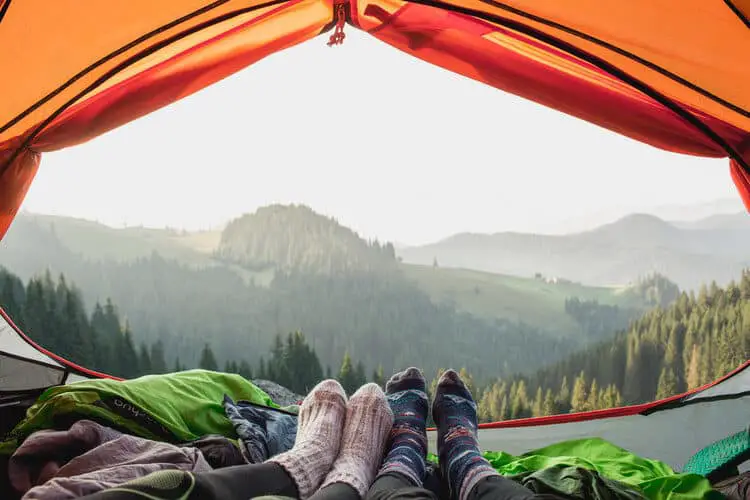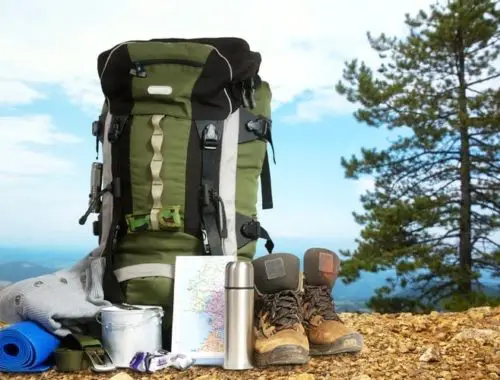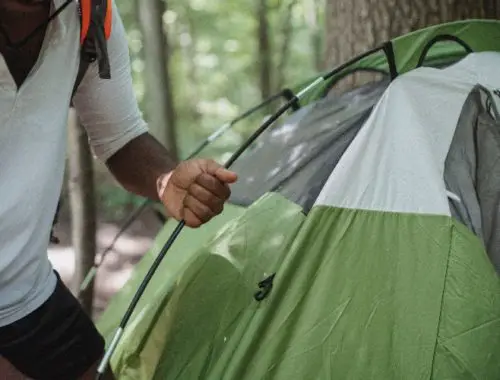It’s not always easy to fall asleep in a tent and wake up feeling rested. There are a few comfortable ways to sleep in a tent the next time you camp, though.
Sleeping in a tent doesn’t always come naturally. For many first-time campers, their first night out is a difficult one, and getting a few hours of shuteye may be harder than you might think. That said, it all boils down to how you choose to sleep in your tent. Simply put, your natural sleeping position at home, on your luxury 10” mattress, isn’t likely to fly out in the woods, sleeping on the ground.
So, whether you have a five-star inflatable camping mattress, a memory foam camping pillow, or none of the above, here are the best ways to get the Z’s you need while out camping this weekend.
The Mummy

Image courtesy of Pexels
Best choice overall, and best way to sleep in a tent if you have no pillow and/or mattress
Mummy style is fairly self-explanatory. You’re on your back, with your arms by your side or crossed over your chest. This is a camper’s favorite way to sleep, and sleeping on the back is generally the healthiest way to sleep as well in terms of spinal alignment, but as with all sleeping positions, it really comes down to preference.
For those with scoliosis, particularly arching of the back above the sacroiliac joint, sleeping on your back like this may be uncomfortable.1 If you suffer from neck pain, you may find it much more natural and comfortable for your neck and shoulders to sleep flat on your back than when curling up on your side.
Additionally, you may end up camping with an uber-thin foam mattress (or no mattress at all) to save weight, particularly when motorcycle camping and the mummy position is much more comfortable in these instances. This is because when lying on your back, there’s more surface area touching the ground, so your body weight is more evenly distributed, hence less pressure is applied to any individual region of your body. Even if you don’t usually sleep on your back at home, sometimes sleeping on your back, mummy-style is much more comfortable when camping, simply because you’re putting less pressure on your body.
The Cocoon
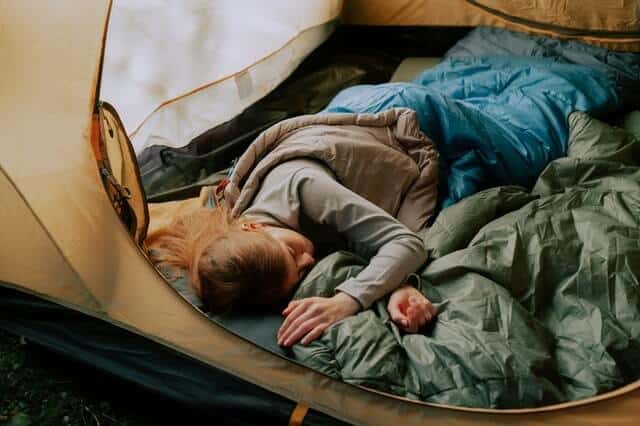
Image courtesy of Pexels
Best choice for warmth and snorers
On the other end of the spectrum, we have cocoon style, where you’re curled up on your side, in something resembling the fetal position. This position is a better way to provide head and neck support if you don’t have a pillow on hand, since you can put your arms underneath your head, but it also puts more pressure on your hips and shoulder. For those who have broad shoulders, the cocoon position is often uncomfortable.
For cold weather, however, the cocoon position can help conserve body heat, and it’s also the best position for those who snore or suffer from sleep apnea. It’s worth mentioning, however, that when sleeping in tighter cold weather sleeping bags it actually can be harder to bring your knees up high enough in your bag to get yourself into the cocoon position in the first place. Overall, the cocoon position’s viability is dependent on your sleeping bag style, and how it feels to you once you get into it.2
With a Partner
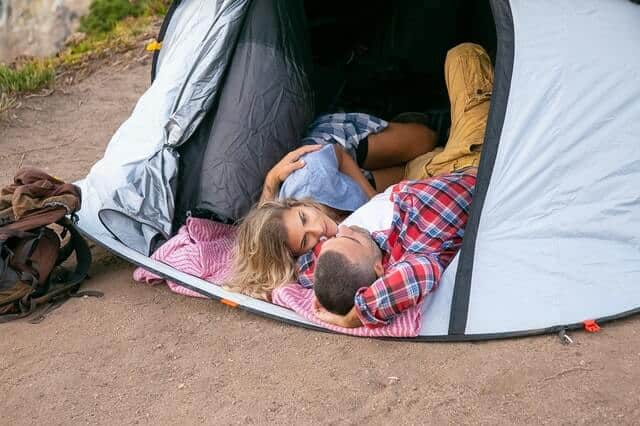
Image courtesy of Pexels
The best choice… well, if you have a partner!
There are a variety of double sleeping bag options on the market for couples, and sleeping with a second person is almost always warmer and cozier. Just like sleeping together at home, however, it can be a bit uncomfortable unless you find the right position.
You can always use camping blankets instead of sleeping bags, or simply unzip both your sleeping bags and wrap them around you, but double sleeping bags are the best route of choice if you’re planning on sleeping with a partner regularly. They provide more heat retention than blankets or unzipped single bags, offer full-body coverage, and all around are better designed to handle two sleepers.
Conclusion
At the end of the day, the way you choose to sleep in a tent is completely up to you. Every human body is built differently. We’re all different heights and weights and proportions, and no one is going to enjoy sleeping exactly the same way as anyone else. The above are three great positions to try but don’t be afraid to listen to your gut.
Unlike your regular sleeping habits at home, how you sleep when you’re out camping isn’t likely to have any profound impact on your overall health long term. What’s most important is that you’re comfortable and you get some decent sleep, so you can be rested and ready for the morning!
Article Sources
Adventure Daily uses only high-quality sources, including peer-reviewed studies, to support the facts within our articles. Read our editorial process to learn more about how we fact-check and keep our content accurate, reliable, and trustworthy.
- DhingraSLEEPING WITH SCOLIOSIS – ALL YOU NEED TO KNOW. supercomfysleep.com. Published 17 Dec 2020. Accessed 5 Nov 2021.
- Hostetter, Kristin. Sleeping Bag Buying Guide. backpacker.com. Published 1o Feb 2011. Accessed 5 Nov 2021.
